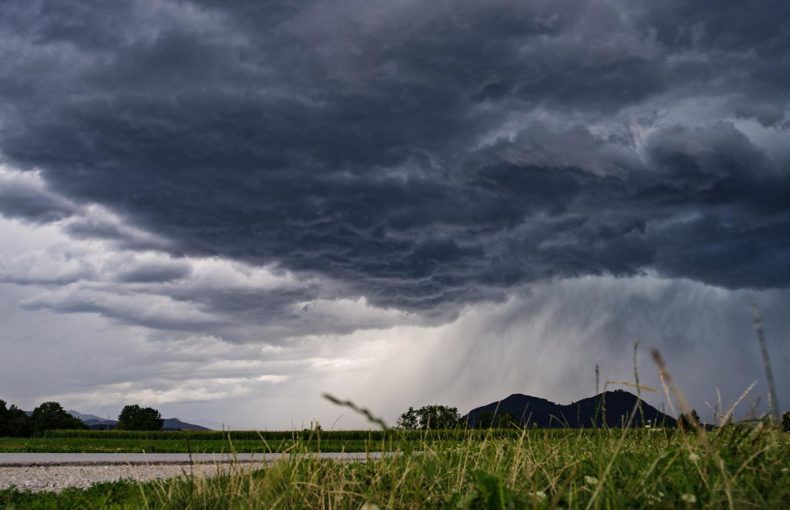Struck by danger: Understanding lightning risks at worksites and outdoor events
A deep dive into lightning fatalities in the United States and the risks facing businesses, workers, and event organizers underscores the importance of preparedness and risk mitigation.
Thunderstorms are not merely inconvenient for businesses dependent on outdoor conditions; they also present significant safety hazards. Lightning, in particular, is a deadly risk to workers and a severe threat to outdoor events if proper awareness, safety protocols, and risk mitigation strategies are not in place.
According to the National Weather Service, lightning strikes the United States about 25 million times annually on average. Each year, around 21 people are killed by lightning, according to the National Lightning Safety Council. This places the odds of being struck by lightning at some point in a given person’s lifetime at 1 in 20,000.
About 10% of lightning victims succumb to injuries caused by lightning strikes, but those who survive often face life-long neurological disabilities and intense pain.
In this article, we will explore the dangers of lightning in the US, analyzing fatality data across various outdoor activities, including work-related incidents. We will also provide essential insights for businesses and event organizers to proactively manage and mitigate these risks.
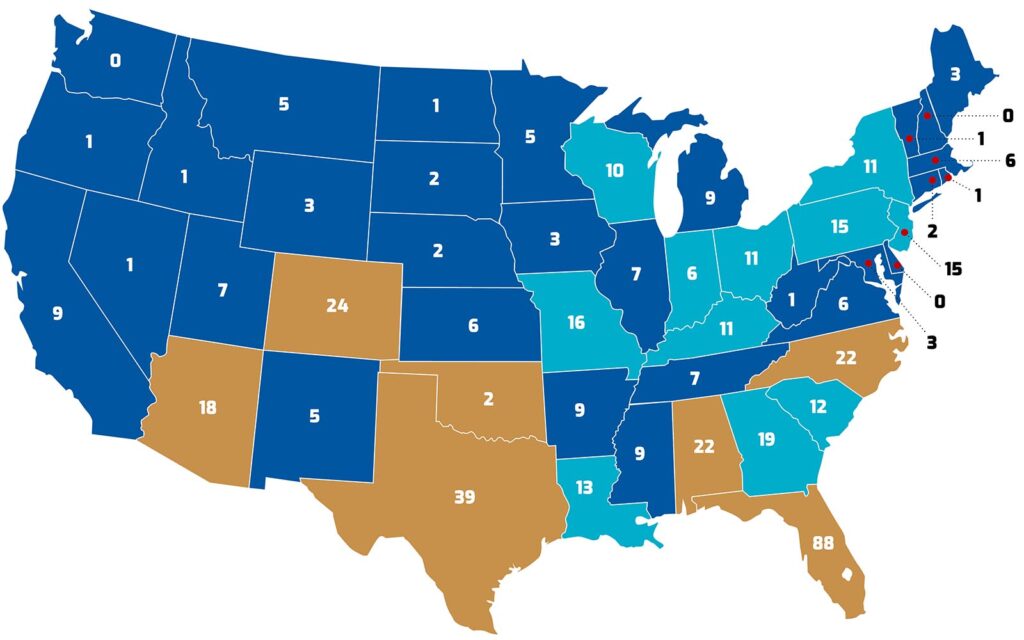
Lightning deaths by state based on National Lightning Safety Council data from 2006-2023. Florida leads the US in lightning fatalities.
The shocking truth: lightning fatalities in the US from 2006 to 2023
Lightning fatalities have significantly decreased in the United States since the early 2000s when annual national lightning awareness campaigns began. In 2001, the first-ever Lightning Safety Awareness Week was held, and each year during the last week of June, the campaign continues.
“When we began our lightning safety effort in 2001, the U.S. had a 10-year average of about 55 lightning deaths per year,” John Jensenius, Meteorologist and Lightning Safety Specialist with the National Lightning Safety Council, told Spire Weather & Climate. “That 10-year average is now about 21 deaths per year. For the past five years, the U.S. has averaged about 16 deaths per year.”
“Throughout these years, leisure activities have contributed to about two-thirds of the deaths,” Jensenius added.
Fishing (9%), beach (6%), boating (5%), camping 23 (5%), farming or ranching (5%) are among the activities that contributed most to lightning deaths in the US between 2006 and 2023, according to analysis from Jensenius.
However, between 2006 and 2023, more than six dozen work-related lightning deaths were recorded in the US.
“Farming, ranching, and roofing have contributed to the greatest number of [work-related] fatalities,” Jensenius said. Construction, lawn care, and military deaths were also noted in Jensenius’ study.
Lightning fatalities – work-related activities
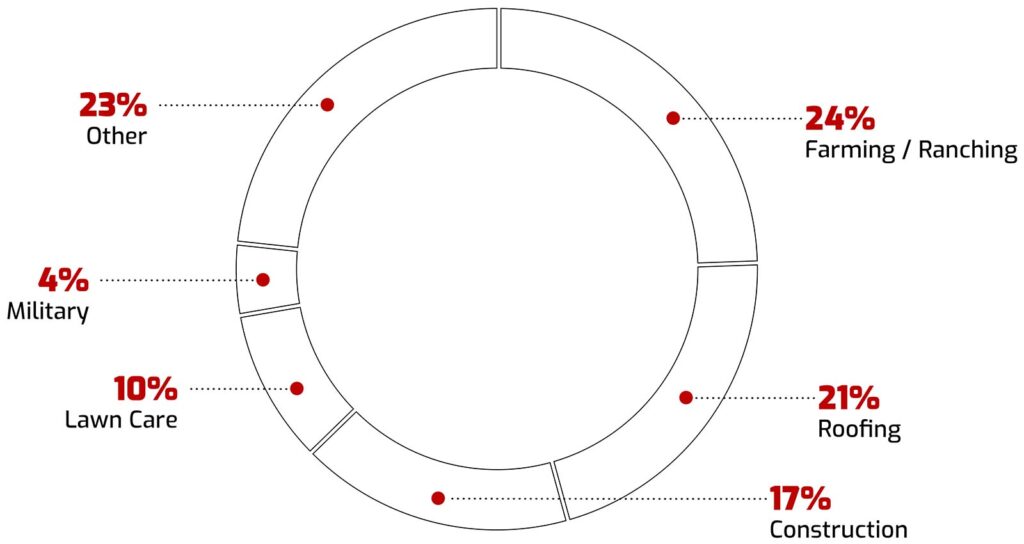
Lightning fatalities broken down by work-related activities based on 94 cases from 2006-2023 analyzed by the National Lightning Safety Council.
According to the National Lightning Safety Council, Florida had the highest number of lightning fatalities with a total of 88 deaths being reported from 2006 to 2023. Texas’ lightning fatalities ranked second, with a tally of 39 deaths, followed by Colorado with 24, and Alabama and North Carolina with 22 each.
July is by far the most dangerous month for deadly lightning strikes in the US based on historical data, followed by June then August. Not only are thunderstorms more numerous, often a daily occurrence across portions of the Southeast US during the sultry summer months, but people also tend to spend more time outdoors and partake in outdoor activities and organized events during these warm months.
Notably, the data points to more males being struck than females, with 80% of the deaths being male, Jensenius explained.
The National Lightning Safety Council estimates that the odds of any person being struck by lightning in a given year is 1 in 1.6 million, but lightning tragedies can be avoided with proper awareness and preparedness.
25 million
lightning strikes in the US per year
21 fatalities
from lightning strikes in the US annually
1 in 20,000
lifetime odds of being struck by lightning
1 in 1.6 million
odds per year of being struck by lightning
90% survival rate
but victims may face lifelong neurological disabilities & pain
10-15 miles
how far lightning can strike from a thunderstorm
The importance of preparedness: insights for safer outdoor events and worksites
Lightning poses a significant threat to workers in outdoor environments, and it is often underestimated as an occupational hazard. According to the Occupational Safety and Health Administration (OSHA) and the National Oceanic and Atmospheric Administration (NOAA), understanding the risks associated with lightning and implementing proper safety protocols is crucial for protecting workers. Employers and supervisors must proactively monitor weather conditions, educate employees, and provide adequate shelter to minimize the dangers posed by lightning.
Lightning can strike ahead of and after a storm’s rainfall, making it essential for outdoor workers to be vigilant. The key to safety is recognizing the early signs of thunderstorms and seeking shelter immediately.
Employers should establish a comprehensive Emergency Action Plan (EAP) that includes a lightning safety protocol, ensuring workers are informed and can respond quickly to weather warnings. Proper training and the use of lightning detection systems can further enhance workplace safety and reduce libel exposure by providing timely alerts and detailed weather forecasts.
Two critical aspects of employer lightning risk mitigation, include:
- Implementing an Emergency Action Plan (EAP): Ensure your EAP includes specific lightning safety protocols and that all workers are trained on these procedures.
- Using Lightning Detection Systems: Utilize commercial lightning detection services for real-time alerts and detailed strike information.
Lightning safety procedures should account for several considerations, and defining safe shelter should be high on the list.
“To be safe a person must be inside a substantial building (one with wiring or plumbing) or a hard-topped vehicle when a thunderstorm is in the area (within 10 miles of the location),” Jensenius explained.
The following safety tips are recommended by experts ahead of any type of outdoor activity or work:
- Monitor Weather Conditions: Regularly check weather forecasts before starting outdoor work and continue to monitor conditions when outdoors. Keep an eye on the sky and use phone apps to monitor radar and lightning data, if available.
- Consider Canceling or Postponing Work Activities or Events: Pay attention to the forecast and consider altering work or event plans when thunderstorms are expected, especially if it will be difficult to reach a safe place quickly.
- Plan Ahead: Determine where you will go for safety when a thunderstorm develops or approaches.
- Seek Safe Shelter: Heed signs of developing or approaching storms. When thunder is heard or lightning is seen, immediately move to a fully enclosed building with electrical wiring and plumbing or a hard-topped metal vehicle.
- Avoid High-Risk Areas: Stay away from isolated tall objects, open fields, water bodies, and metal structures during thunderstorms.
- Remain inside for 30 minutes after the last clap of thunder is heard.
By taking these proactive measures, employers and employees can significantly reduce the risk of lightning-related injuries and fatalities at outdoor worksites.
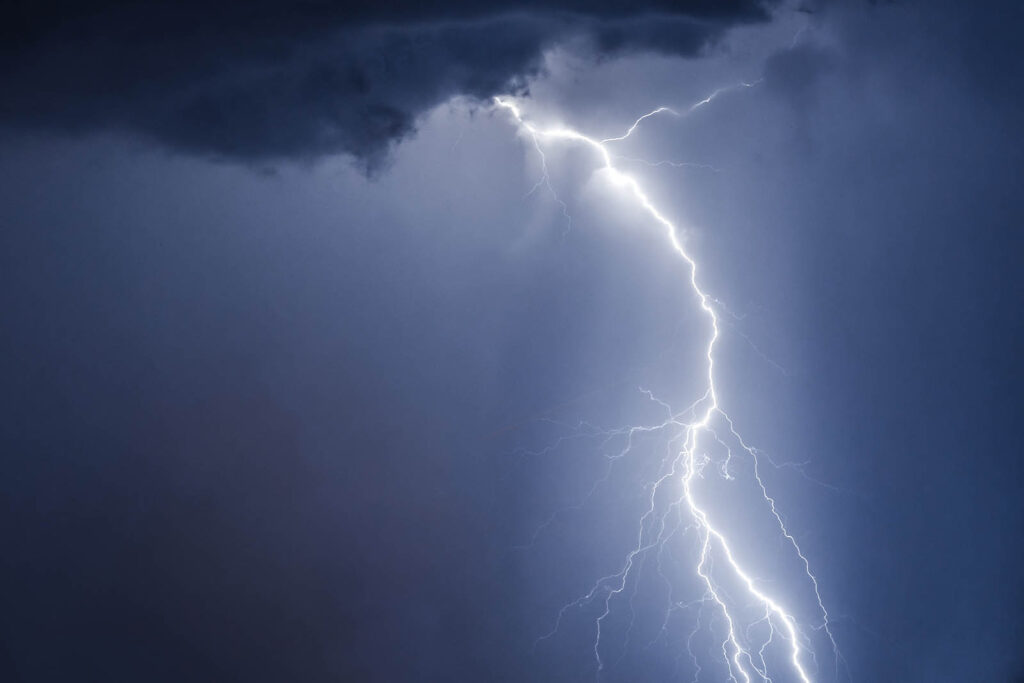
Mitigating lightning risks in the workplace and beyond
Businesses have a responsibility to provide a safe work environment for employees, and there are tools and solutions that can help organizations make better decisions, prepare and mitigate thunderstorm risks such as lightning.
“Real-time monitoring systems like radar and lightning detection play an important role in monitoring weather conditions and alerting to the possibility of lightning. Equally important is monitoring weather conditions with your eyes and ears. Darkening skies or the sound of thunder should serve as a warning of the lightning danger,” Jensenius explained.
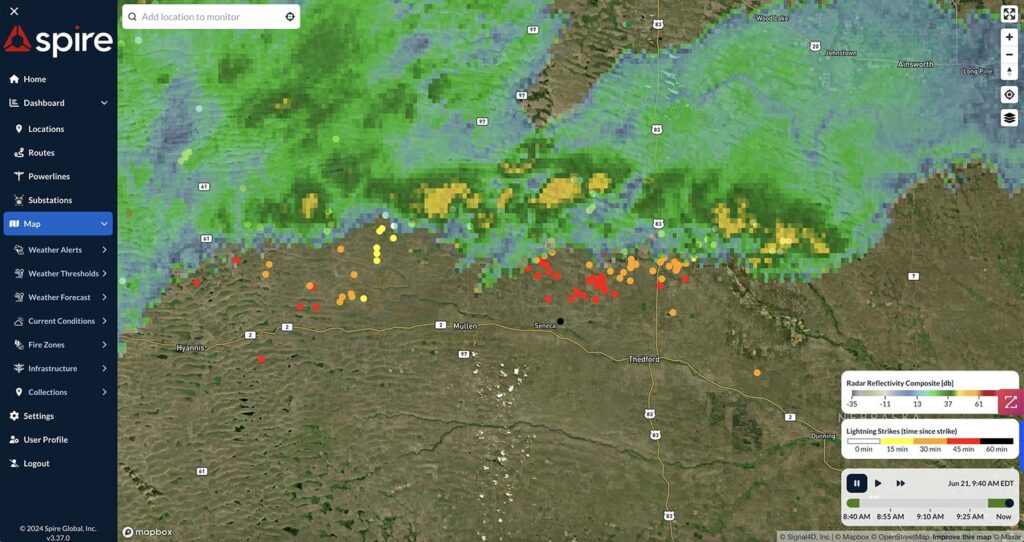
Spire’s DeepVision™ is a superior visualization platform for comprehensive weather risk management for businesses. This image from the platform displays a radar image and lightning strikes (color-coded based on the time since the strike). Lightning strikes can be seen far away from rainfall associated with the thunderstorms in this image.
How businesses benefit from monitoring, alerting with Spire DeepVision™
Spire DeepVision™ offers radar visualization for North America and Europe and includes lightning strike and lightning density features. The tool is a fully customizable solution, including weather alerting and monitoring specific to your business and assets.
Spire’s 24/7/365 team of expert meteorologists, the DeepVision Weather Support team, provide tailored forecasts and real-time, on-demand updates delivered by phone, chat, video, and/or email when you need it to support your operations and logistics.
Our Spire High-Resolution Forecast can help meteorologists diagnose environments that may support thunderstorms or severe weather with more lead time to allow for better business and event preparation. Our model outputs include precise hour-by-hour forecasts up to 1 km extending six days to provide more advanced notice on potential weather hazards like thunderstorm threats.
Implementing safety recommendations and leveraging advanced forecasting tools can help businesses mitigate lightning risks effectively. By staying informed and prepared, employers can protect their workers and ensure a safer work environment.
For more detailed insights and to explore how Spire can help your business with weather risk mitigation, contact us.
 Written by
Written by


